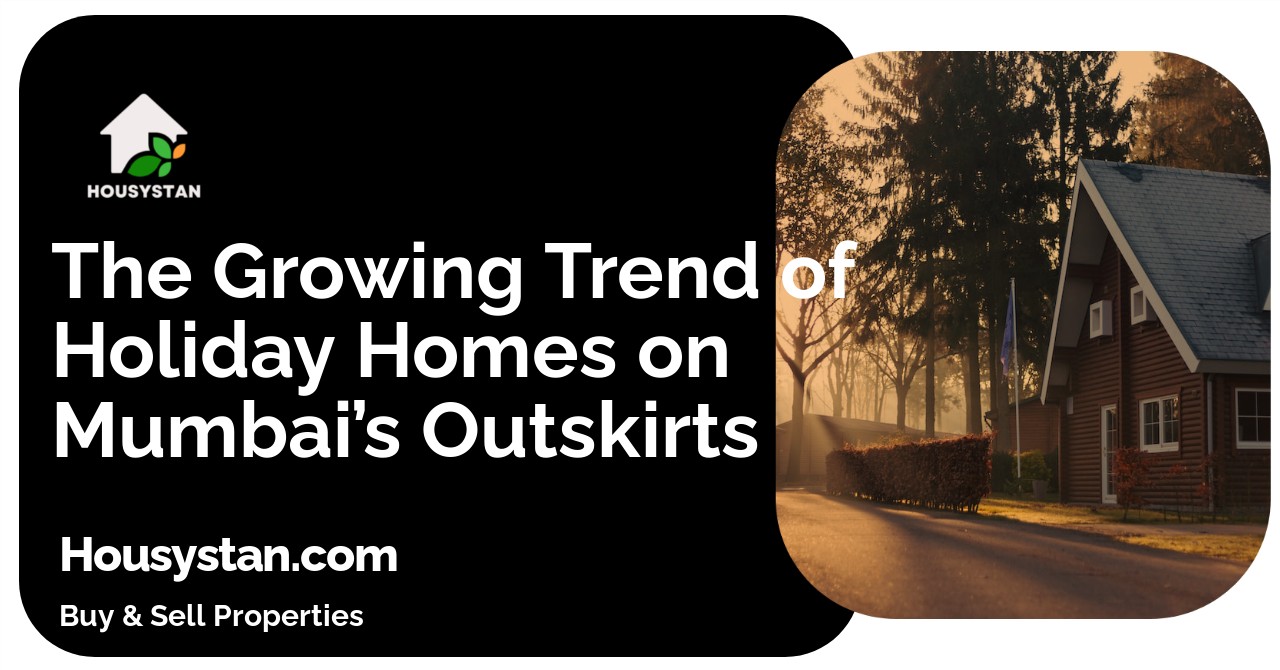The Growing Trend of Holiday Homes on Mumbai’s Outskirts
Read latest blogs and articles from Housystan

The Information mentioned here was last updated on:
28/12/2025The demand for holiday homes on the outskirts of Mumbai has witnessed a remarkable surge in recent years. More urban residents are choosing to invest in getaway properties situated away from the city’s congestion, seeking peace, privacy, and a refreshing environment. Areas like Lonavala, Alibaug, Karjat, Igatpuri, and Panvel have emerged as preferred destinations for those looking to own a second home that offers both leisure and investment potential.
One of the primary factors fueling the popularity of holiday homes near Mumbai is the desire for a balanced lifestyle. The urban hustle often leaves little room for relaxation. Weekend retreats in scenic locations provide families and professionals an opportunity to recharge amid nature without traveling far. These properties serve not only as vacation spots but also as remote workspaces, especially with the growing acceptance of flexible work arrangements.
Another significant advantage is the potential for rental income. With platforms like Airbnb and other vacation rental services, homeowners can monetize their properties during periods when they are not in use. This trend has made holiday homes a lucrative asset for investors exploring real estate opportunities beyond Mumbai’s city limits.
- Verified Tenants/Buyers
- Unlimited Property Listing
- Zero subscription/charges fee
Connectivity and infrastructure improvements have also played a vital role. Enhanced road networks, upcoming expressways, and improved rail links make commuting to these destinations more convenient than ever. As a result, areas surrounding Mumbai have become more accessible, attracting buyers from across the city and neighboring regions.
Moreover, the natural beauty and tranquil atmosphere of these vacation spots offer a stark contrast to city life. Lush greenery, scenic mountains, pristine beaches, and clean air create an inviting setting for relaxation, recreation, and quality family time. For many buyers, owning a holiday home in locations such as Alibaug or Lonavala represents not just a real estate investment, but a lifestyle upgrade.
In summary, the trend of investing in holiday homes around Mumbai’s periphery continues to grow, driven by lifestyle aspirations, investment opportunities, and improved accessibility. Whether for personal enjoyment, rental income, or long-term asset appreciation, properties in the outskirts of Mumbai are becoming a preferred choice for discerning buyers seeking the best of both worlds—urban convenience and serene living.